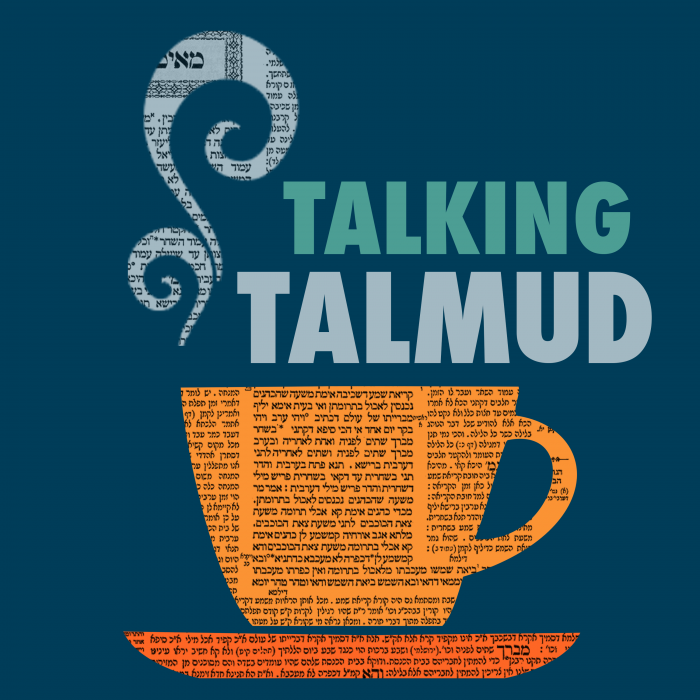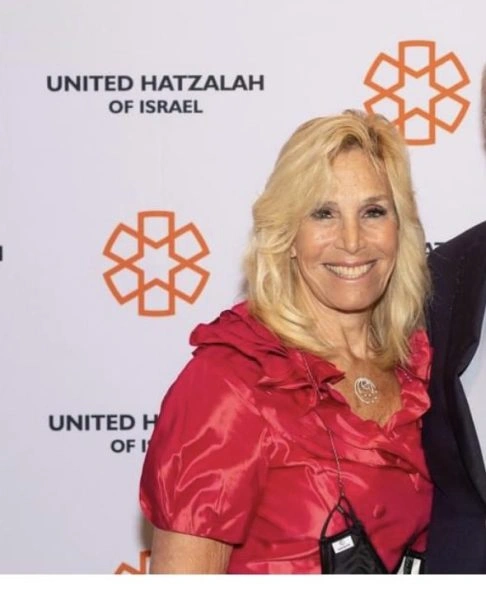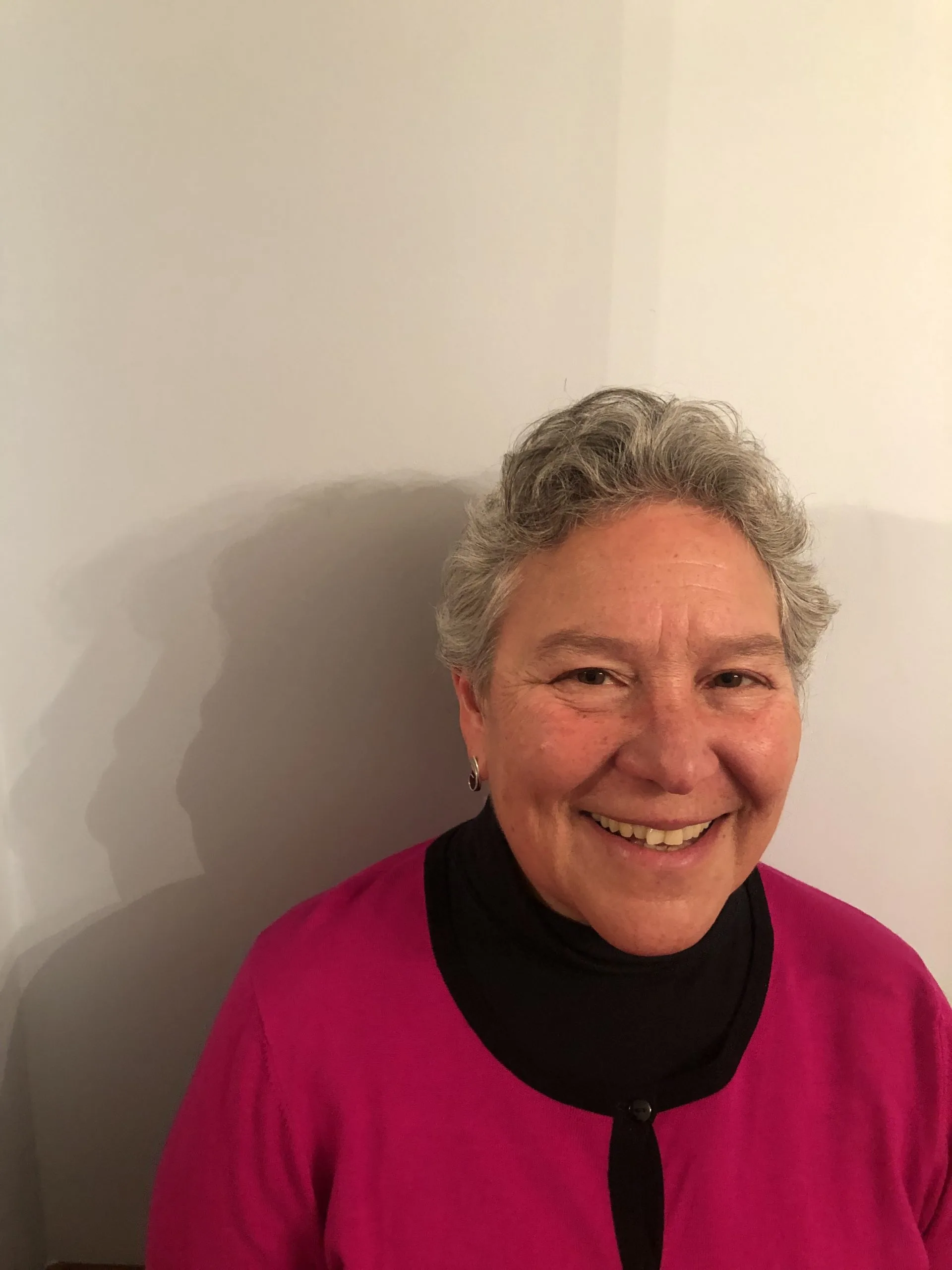Shabbat 49
וְגָזְרוּ רַבָּנַן עַל טוּמְאָה שֶׁלֹּא בִּשְׁעַת מְלָאכָה מִשּׁוּם טוּמְאָה שֶׁבִּשְׁעַת מְלָאכָה, וְעַל הַזָּאָה שֶׁבִּשְׁעַת מְלָאכָה מִשּׁוּם הַזָּאָה שֶׁלֹּא בִּשְׁעַת מְלָאכָה.
And the Sages issued a decree that it should be considered a connection with regard to ritual impurity even when not in use, due to ritual impurity when in use. If one component becomes ritually impure, the other component becomes ritually impure as well. And, as a further stringency, they issued a decree that it is not considered a connection with regard to sprinkling even when in use, due to sprinkling when not in use. The water of purification must be sprinkled on each part individually.
בִּזְמַן שֶׁהֵן לַחִין. אִיבַּעְיָא לְהוּ: לַחִין מֵחֲמַת עַצְמָן, אוֹ דִילְמָא לַחִין מֵחֲמַת דָּבָר אַחֵר.
The mishna listed several materials in which food may not be insulated on Shabbat eve when those materials are moist. A dilemma was raised before the Sages: Is the mishna referring specifically to materials that are moist due to their own natural state, or is it referring perhaps even to materials that are now moist due to something else, e.g., because they were soaked by liquid?
תָּא שְׁמַע: לֹא בַּתֶּבֶן וְלֹא בַּזַּגִּים וְלֹא בַּמּוֹכִין וְלֹא בָּעֲשָׂבִים בִּזְמַן שֶׁהֵן לַחִין. אִי אָמְרַתְּ בִּשְׁלָמָא לַחִין מֵחֲמַת דָּבָר אַחֵר — שַׁפִּיר. אֶלָּא אִי אָמְרַתְּ לַחִין מֵחֲמַת עַצְמָן, מוֹכִין לַחִין מֵחֲמַת עַצְמָן הֵיכִי מַשְׁכַּחַתְּ לַהּ? — מִמִּרְטָא דְּבֵינֵי אַטְמֵי.
Come and hear a resolution to this dilemma from the materials listed in the mishna: And one may neither insulate a pot in straw, nor in the residue of grapes that have been pressed for their juice, nor in soft materials, nor in grass, when these materials are moist. Granted, if you say that the mishna is referring to materials that are moist due to something else, this can be well understood, as all of these materials can get wet. However, if you say that it is referring to materials that are moist due to their own natural state, where do you find soft materials that are moist due to their own natural state? Wool is dry in its natural state. The Gemara rejects this argument: The mishna is referring to a case where the material is made from wool plucked from between the thighs of the animal, as that wool is usually damp from sweat.
וְהָא דְתָנֵי רַבִּי אוֹשַׁעְיָא: טוֹמְנִין בִּכְסוּת יְבֵשָׁה וּבְפֵירוֹת יְבֵשִׁין, אֲבָל לֹא בִּכְסוּת לַחָה וְלֹא בְּפֵירוֹת לַחִין. כְּסוּת לַחָה מֵחֲמַת עַצְמָהּ הֵיכִי מַשְׁכַּחַתְּ לַהּ? — מִמִּרְטָא דְּבֵינֵי אַטְמֵי.
The Gemara continues with a similar question: And that which Rabbi Oshaya taught in a baraita: One may insulate a pot of hot food on Shabbat eve in a dry garment and in dry produce, but not in a moist garment or in moist produce. Where do you find a ruling pertaining to a cloth that is moist due to its own natural state? The Gemara answers: Here too, the baraita is referring to a case where the cloth was made from wool plucked from between the thighs of the animal. The wool was spun and the cloth was woven while the wool was still moist. Consequently, there is no conclusive proof whether the materials listed in the mishna are prohibited only when naturally moist or even if they are moist due to another source.
מַתְנִי׳ טוֹמְנִין בִּכְסוּת וּבְפֵירוֹת, בְּכַנְפֵי יוֹנָה וּבִנְסוֹרֶת שֶׁל חָרָשִׁים וּבִנְעוֹרֶת שֶׁל פִּשְׁתָּן דַּקָּה. רַבִּי יְהוּדָה אוֹסֵר בַּדַּקָּה וּמַתִּיר בַּגַּסָּה.
MISHNA: One may insulate a pot of hot food on Shabbat eve in clothing, in produce, in doves’ wings, in a carpenter’s wood-shavings, and in the chaff of fine flax. Rabbi Yehuda prohibits doing so when it is fine, and permits doing so when it is coarse.
גְּמָ׳ אָמַר רַבִּי יַנַּאי: תְּפִילִּין צְרִיכִין גּוּף נָקִי כֶּאֱלִישָׁע ״בַּעַל כְּנָפַיִם״. מַאי הִיא? אַבָּיֵי אָמַר: שֶׁלֹּא יָפִיחַ בָּהֶן. רָבָא אָמַר: שֶׁלֹּא יִישַׁן בָּהֶן.
GEMARA: Since doves’ wings were mentioned in the mishna, the Gemara cites a related story: Rabbi Yannai said: Donning phylacteries requires a clean body, like that of Elisha, Man of Wings. The Gemara asks: What is the meaning of the statement that donning phylacteries requires a clean body? Abaye said: It means that one may not break wind while donning them. Rava said: It means that one may not sleep in them.
וְאַמַּאי קָרֵי לֵיהּ ״בַּעַל כְּנָפַיִם״? — שֶׁפַּעַם אַחַת גָּזְרָה מַלְכוּת רוֹמִי הָרְשָׁעָה שְׁמָד עַל יִשְׂרָאֵל שֶׁכָּל הַמַּנִּיחַ תְּפִילִּין יְנַקְּרוּ אֶת מוֹחוֹ, וְהָיָה אֱלִישָׁע מַנִּיחָם וְיוֹצֵא לַשּׁוּק. רָאָהוּ קַסְדּוֹר אֶחָד רָץ מִפָּנָיו וְרָץ אַחֲרָיו. וְכֵיוָן שֶׁהִגִּיעַ אֶצְלוֹ נְטָלָן מֵרֹאשׁוֹ וַאֲחָזָן בְּיָדוֹ. אָמַר לוֹ: מַה זֶּה בְּיָדְךָ? אָמַר לוֹ: כַּנְפֵי יוֹנָה. פָּשַׁט אֶת יָדוֹ וְנִמְצְאוּ כַּנְפֵי יוֹנָה. לְפִיכָךְ קוֹרִין אוֹתוֹ ״אֱלִישָׁע בַּעַל כְּנָפַיִם״.
The Gemara asks: And why did they call Elisha Man of Wings? Because on one occasion the evil kingdom of Rome issued a decree against Israel that, as punishment, they would pierce the brain of anyone who dons phylacteries. Nevertheless, Elisha would don them and defiantly go out to the marketplace. One day, an official [kasdor] who was appointed to enforce the decree saw him; Elisha ran away from him, and the official ran after him. When the official reached him, Elisha removed the phylacteries from his head and held them in his hand. The officer asked him: What is that in your hand? Elisha said to him: It is merely a dove’s wings. A miracle was performed: He opened his hand, and, indeed, it was found to be a dove’s wings. Therefore, in commemoration of this miracle, they would call him Elisha, Man of Wings.
וּמַאי שְׁנָא כַּנְפֵי יוֹנָה מִשְּׁאָר עוֹפוֹת? מִשּׁוּם דְּאִמְּתִיל כְּנֶסֶת יִשְׂרָאֵל לְיוֹנָה, שֶׁנֶּאֱמַר: ״כַּנְפֵי יוֹנָה נֶחְפָּה בַכֶּסֶף וְגוֹ׳״ — מַה יּוֹנָה כְּנָפֶיהָ מְגִינּוֹת עָלֶיהָ, אַף יִשְׂרָאֵל מִצְוֹת מְגִינּוֹת עֲלֵיהֶן.
The Gemara asks: And what is different about doves’ wings from those of other birds that led Elisha to say that he had doves’ wings in his hand? The Gemara answers: Because the congregation of Israel is likened to a dove, as it is stated: “You shall shine as the wings of a dove covered with silver and her pinions with yellow gold” (Psalms 68:14). Just as this dove, only its wings protect it and it has no other means of protection, so too the Jewish people, only mitzvot protect them.
בִּנְסוֹרֶת שֶׁל חָרָשִׁין כּוּ׳. אִיבַּעְיָא לְהוּ: רַבִּי יְהוּדָה אַנְּסוֹרֶת שֶׁל חָרָשִׁין קָאֵי, אוֹ אַנְּעוֹרֶת שֶׁל פִּשְׁתָּן קָאֵי?
We learned in the mishna: One may insulate food on Shabbat eve in a carpenter’s wood-shavings, and in the chaff of fine flax. Rabbi Yehuda prohibits doing so when it is fine, and permits doing so when it is coarse. A dilemma was raised before the Sages: Is the statement of Rabbi Yehuda referring to the carpenter’s wood-shavings, or is it referring to the chaff of flax?
תָּא שְׁמַע, דְּתַנְיָא רַבִּי יְהוּדָה אוֹמֵר: נְעוֹרֶת שֶׁל פִּשְׁתָּן דַּקָּה הֲרֵי הִיא כְּזֶבֶל. שְׁמַע מִינַּהּ אַנְּעוֹרֶת שֶׁל פִּשְׁתָּן קָאֵי. שְׁמַע מִינַּהּ.
The Gemara answers: Come and hear proof as it was taught in a baraita: Rabbi Yehuda says: The legal status of the chaff of fine flax is like that of manure, i.e., it adds heat. The Gemara comments: Conclude from it that Rabbi Yehuda is referring to the chaff of flax. The Gemara concludes: Indeed, conclude from it.
מַתְנִי׳ טוֹמְנִין בְּשִׁלְחִין וּמְטַלְטְלִין אוֹתָן, בְּגִיזֵּי צֶמֶר וְאֵין מְטַלְטְלִין אוֹתָן. כֵּיצַד הוּא עוֹשֶׂה? נוֹטֵל אֶת הַכִּסּוּי, וְהֵן נוֹפְלוֹת.
MISHNA: One may insulate cooked food on Shabbat eve in animal hides and may move those hides on Shabbat. So too, one may insulate food in wool fleece and, in contrast to hides, one may not move the fleece. How, then, does one act if he insulated food in fleece, and now wishes to remove the pot? He lifts the cover, which he is permitted to move, and the fleece falls by itself. He need not even touch it.
רַבִּי אֶלְעָזָר בֶּן עֲזַרְיָה אוֹמֵר: קוּפָּה, מַטָּהּ עַל צִדָּהּ וְנוֹטֵל, שֶׁמָּא יִטּוֹל וְאֵינוֹ יָכוֹל לְהַחֲזִיר. וַחֲכָמִים אוֹמְרִים: נוֹטֵל וּמַחֲזִיר.
Rabbi Elazar ben Azarya says: If he placed the pot in a basket filled with fleece, he leans the basket on its side so that the fleece will fall to the side and takes the pot. Otherwise, there is concern lest the wool collapse when he lifts the pot from the basket. And then, he will be unable to replace the pot, as it is prohibited to move the wool to make room for the pot, since the wool is set-aside. And the Rabbis disagree and say: He may take the pot and afterward replace it.
גְּמָ׳ יָתֵיב רַבִּי יוֹנָתָן בֶּן עֲכִינַאי וְרַבִּי יוֹנָתָן בֶּן אֶלְעָזָר, וְיָתֵיב רַבִּי חֲנִינָא בַּר חָמָא גַּבַּיְיהוּ, וְקָא מִיבַּעְיָא לְהוּ: שְׁלָחִין שֶׁל בַּעַל הַבַּיִת תְּנַן, אֲבָל שֶׁל אוּמָּן כֵּיוָן דְּקָפֵיד עֲלַיְיהוּ לָא מְטַלְטְלִינַן לְהוּ. אוֹ דִילְמָא שֶׁל אוּמָּן תְּנַן, וְכָל שֶׁכֵּן שֶׁל בַּעַל הַבַּיִת?
GEMARA: The Gemara relates that Rabbi Yonatan ben Akhinai and Rabbi Yonatan ben Elazar sat, and Rabbi Ḥanina bar Ḥama sat with them, and they raised the following dilemma: Did we learn the halakha in the mishna that only the hides of a common homeowner may be moved; however, the hides of a craftsman, whose profession is processing hides, since he is particular that they not be ruined because they are essential to his work, one may not move them on Shabbat? Or, perhaps, we learned the halakha in the mishna that even the hides of a craftsman may be moved, and all the more so that hides of a common homeowner may be moved.
אֲמַר לְהוּ רַבִּי יוֹנָתָן בֶּן אֶלְעָזָר: מִסְתַּבְּרָא שֶׁל בַּעַל הַבַּיִת תְּנַן, אֲבָל שֶׁל אוּמָּן קָפֵיד עֲלַיְיהוּ. אֲמַר לְהוּ רַבִּי חֲנִינָא בַּר חָמָא, כָּךְ אָמַר רַבִּי יִשְׁמָעֵאל בְּרַבִּי יוֹסֵי:
Rabbi Yonatan ben Elazar said to them: It stands to reason that we learned the halakha in the mishna with regard to the hides of a common homeowner; however, hides of a craftsman may not be moved, since he is particular about them. Rabbi Ḥanina bar Ḥama said to them that Rabbi Yishmael, son of Rabbi Yosei, said as follows:
אַבָּא — שַׁלָּחָא הֲוָה, וְאָמַר הָבִיאוּ שְׁלָחִין וְנֵשֵׁב עֲלֵיהֶן.
My father was a tanner, and one Shabbat he said: Bring me hides and we will sit on them (Rabbeinu Ḥananel). In other words, even the hides of a craftsman may be moved on Shabbat.
מֵיתִיבִי: נְסָרִין שֶׁל בַּעַל הַבַּיִת מְטַלְטְלִין אוֹתָן, וְשֶׁל אוּמָּן אֵין מְטַלְטְלִין אוֹתָן. וְאִם חִישֵּׁב לָתֵת עֲלֵיהֶן פַּת לָאוֹרְחִין — בֵּין כָּךְ וּבֵין כָּךְ מְטַלְטְלִין! שָׁאנֵי נְסָרִים דְּקָפֵיד עֲלַיְיהוּ.
The Gemara raises an objection from a baraita: With regard to wooden boards belonging to a homeowner, one may move them on Shabbat; however, those belonging to a craftsman, one may not move them. And if, however, he thought to place bread upon them for guests, both these, the boards of the homeowner, and those, the boards of the craftsman, may be moved. Apparently, the raw materials of a craftsman may not be moved on Shabbat. The Gemara answers: Wooden boards are different in that one is particular about them that they not be damaged. Hides, on the other hand, are not damaged when one sits on them.
תָּא שְׁמַע: עוֹרוֹת, בֵּין עֲבוּדִין וּבֵין שֶׁאֵין עֲבוּדִין, מוּתָּר לְטַלְטְלָן בְּשַׁבָּת. לֹא אָמְרוּ עֲבוּדִין אֶלָּא לְעִנְיַן טוּמְאָה בִּלְבַד. מַאי לַָאו לָא שְׁנָא שֶׁל בַּעַל הַבַּיִת, וְלָא שְׁנָא שֶׁל אוּמָּן? לָא, שֶׁל בַּעַל הַבַּיִת.
The Gemara cites another proof. Come and hear that which was taught in a different baraita: With regard to hides, whether they are tanned or whether they are not tanned, it is permitted to move them on Shabbat. The Sages said that tanned hides have a unique legal status, distinct from the status of hides that have not been tanned only with regard to ritual impurity. Only tanned hides become ritually impure. What, is it not saying that there is no difference whether they are hides belonging to a homeowner and there is no difference whether they are hides belonging to a craftsman; in both cases they may be moved on Shabbat? The Gemara rejects this argument: No, the baraita is referring exclusively to hides belonging to a homeowner.
אֲבָל שֶׁל אוּמָּן מַאי? אֵין מְטַלְטְלִין — אִי הָכִי הָא דְתָנֵי: וְלֹא אָמְרוּ עֲבוּדִין אֶלָּא לְעִנְיַן טוּמְאָה בִּלְבַד, לִפְלוֹג וְלִיתְנֵי בְּדִידַהּ: בַּמֶּה דְּבָרִים אֲמוּרִים — בְּשֶׁל בַּעַל הַבַּיִת, אֲבָל בְּשֶׁל אוּמָּן — לֹא! כּוּלַּהּ בְּבַעַל הַבַּיִת קָמַיְירֵי.
The Gemara asks: But with regard to hides belonging to a craftsman, what is the halakha? Is it true that they may not be moved on Shabbat? If so, that which was taught in the baraita: The Sages said that the legal status of tanned hides is distinct from the status of hides that have not been tanned only with regard to ritual impurity; let the tanna of the baraita distinguish and teach within the halakhot of Shabbat itself, and say: In what case is this statement, that there is no distinction between whether or not the hides were tanned, said? It was stated specifically with regard to hides belonging to a homeowner. However, with regard to hides belonging to a craftsman, no, if they were tanned they may not be moved. The Gemara answers: Since the entire baraita is speaking with regard to hides of a homeowner, it would have been forced to elaborate at greater length to introduce the distinction with regard to the hides of a craftsman than it did to introduce the distinction with regard to ritual impurity.
כְּתַנָּאֵי: עוֹרוֹת שֶׁל בַּעַל הַבַּיִת מְטַלְטְלִין אוֹתָן, וְשֶׁל אוּמָּן אֵין מְטַלְטְלִין אוֹתָן. רַבִּי יוֹסֵי אוֹמֵר: אֶחָד זֶה וְאֶחָד זֶה מְטַלְטְלִין אוֹתָן.
The Gemara notes that this issue is parallel to a dispute between tanna’im, as it was taught in a baraita: With regard to hides belonging to a homeowner, one may move them on Shabbat, and those of a craftsman, one may not move them. Rabbi Yosei says: With regard to both these, the hides of a homeowner, and those, the hides of a craftsman, one may move them.
הֲדוּר יָתְבִי וְקָמִיבַּעְיָא לְהוּ: הָא דִּתְנַן אֲבוֹת מְלָאכוֹת אַרְבָּעִים חָסֵר אַחַת, כְּנֶגֶד מִי?
The Gemara relates that those same Sages who sat and discussed the issue of hides, sat again and they raised a dilemma: That which we learned in the mishna: The primary categories of labor, which are prohibited by Torah law on Shabbat, are forty-less-one; to what does this number correspond? That is to say, what is the source of this number?
אָמַר לְהוּ רַבִּי חֲנִינָא בַּר חָמָא: כְּנֶגֶד עֲבוֹדוֹת הַמִּשְׁכָּן. אֲמַר לְהוּ רַבִּי יוֹנָתָן בְּרַבִּי אֶלְעָזָר, כָּךְ אָמַר רַבִּי שִׁמְעוֹן בְּרַבִּי יוֹסֵי בֶּן לָקוֹנְיָא: כְּנֶגֶד ״מְלָאכָה״ ״מְלַאכְתּוֹ״ וּ״מְלֶאכֶת״ שֶׁבַּתּוֹרָה אַרְבָּעִים חָסֵר אַחַת.
Rabbi Ḥanina bar Ḥama said to them: They correspond to the labors in the Tabernacle. All types of labor that were performed in the Tabernacle are enumerated as primary categories of labor with respect to Shabbat. However, other labors, even if they are significant, are not enumerated among the primary categories of labor since they were not performed in the Tabernacle. Rabbi Yonatan, son of Rabbi Elazar, said to them that so said Rabbi Shimon, son of Rabbi Yosei ben Lakonya: They correspond to the instances of the words labor, his labor, and the labor of, that appear in the Torah a total of forty-less-one times.
בָּעֵי רַב יוֹסֵף: ״וַיָּבֹא הַבַּיְתָה לַעֲשׂוֹת מְלַאכְתּוֹ״, מִמִּנְיָנָא הוּא, אוֹ לָא? אֲמַר לֵיהּ אַבָּיֵי: וְלַיְתֵי סֵפֶר תּוֹרָה וְלִימְנֵי. מִי לָא אָמַר רַבָּה בַּר בַּר חָנָה אָמַר רַבִּי יוֹחָנָן לֹא זָזוּ מִשָּׁם עַד שֶׁהֵבִיאוּ סֵפֶר תּוֹרָה וּמְנָאוּם!
Rav Yosef raised a dilemma: The term his labor is written with regard to Joseph: “And it came to pass about this time, that he came into the house to do his labor; and there was none of the men of the house there within” (Genesis 39:11). Is it included in the count of the thirty-nine instances or not? Abaye said to him: And let us bring a Torah scroll and count the instances of the word labor and thereby determine whether or not there are thirty-nine instances without that one. Didn’t Rabba bar bar Ḥana say that Rabbi Yoḥanan said in a case of similar uncertainty: They did not move from there until they brought a Torah scroll and counted them?
אֲמַר לֵיהּ: כִּי קָא מְסַפְּקָא לִי מִשּׁוּם דִּכְתִיב: ״וְהַמְּלָאכָה הָיְתָה דַיָּם״ מִמִּנְיָנָא הוּא — וְהָא כְּמַאן דְּאָמַר לַעֲשׂוֹת צְרָכָיו נִכְנַס.
Rav Yosef said to Abaye: I cannot reach a conclusion relying solely on a count because there is another instance of the term labor, whose meaning is not clear to me. The reason I am uncertain is because it is written with regard to the Tabernacle: “For the labor they had was sufficient for all the work to do it, and too much” (Exodus 36:7). The question arises whether or not this mention of labor is included in the count of thirty-nine instances, i.e., whether or not it refers to actual labor. And if it does, that verse with regard to Joseph should be understood in accordance with the opinion of the one who said that the expression, to do his labor, is a euphemism. It means that it was to attend to his needs and engage in relations with Potiphar’s wife that he entered.
אוֹ דִילְמָא ״וַיָּבֹא הַבַּיְתָה לַעֲשׂוֹת מְלַאכְתּוֹ״ מִמִּנְיָנָא הוּא, וְהַאי ״וְהַמְּלָאכָה הָיְתָה דַיָּם״ — הָכִי קָאָמַר: דִּשְׁלִימָא לֵיהּ עֲבִידְתָּא. תֵּיקוּ.
Or, perhaps, the verse relating to Joseph: “He came into the house to do his labor,” is included in the count, and it refers to actual labor. And this verse: “The labor they had was sufficient,” is saying the following: That they completed the preparatory labor, i.e., they brought all the materials, not that they engaged in the actual labor. Let the uncertainty stand unresolved.
תַּנְיָא כְּמַאן דְּאָמַר כְּנֶגֶד עֲבוֹדוֹת הַמִּשְׁכָּן. דְּתַנְיָא: אֵין חַיָּיבִין אֶלָּא עַל מְלָאכָה שֶׁכַּיּוֹצֵא בָּהּ הָיְתָה בַּמִּשְׁכָּן. הֵם זָרְעוּ, וְאַתֶּם לֹא תִּזְרְעוּ. הֵם קָצְרוּ, וְאַתֶּם לֹא תִּקְצְרוּ.
With regard to the matter itself, it was taught in a baraita in accordance with the opinion of the one who said that the thirty-nine labors of Shabbat correspond to the labors performed in the Tabernacle. As it was taught in a baraita: One is only liable for performing a labor to which there was a corresponding labor in the Tabernacle. They sowed in order to grow dyes for the Tabernacle, and therefore you may not sow on Shabbat. They reaped, and therefore you may not reap on Shabbat.
הֵם הֶעֱלוּ אֶת הַקְּרָשִׁים מִקַּרְקַע לַעֲגָלָה, וְאַתֶּם לֹא תַּכְנִיסוּ מֵרְשׁוּת הָרַבִּים לִרְשׁוּת הַיָּחִיד. הֵם הוֹרִידוּ אֶת הַקְּרָשִׁים מֵעֲגָלָה לְקַרְקַע, וְאַתֶּם לֹא תּוֹצִיאוּ מֵרְשׁוּת הַיָּחִיד לִרְשׁוּת הָרַבִּים. הֵם הוֹצִיאוּ מֵעֲגָלָה לַעֲגָלָה, וְאַתֶּם לֹא תּוֹצִיאוּ מֵרְשׁוּת הַיָּחִיד לִרְשׁוּת הַיָּחִיד.
They lifted the boards from the ground in the wilderness, which is a public domain, and placed them into the wagon, which is a private domain, and therefore you shall not carry objects in from the public domain to the private domain on Shabbat. They lowered the boards from the wagon to the ground, and therefore you shall not carry objects out from the private domain to the public domain on Shabbat. They took boards and other objects out and passed them from wagon to wagon, i.e., from one private domain to another private domain, and therefore you shall not take objects out from one private domain to another private domain on Shabbat.
מֵרְשׁוּת הַיָּחִיד לִרְשׁוּת הַיָּחִיד מַאי קָא עָבֵיד? אַבָּיֵי וְרָבָא דְּאָמְרִי תַּרְוַויְהוּ, וְאִיתֵּימָא רַב אַדָּא בַּר אַהֲבָה: מֵרְשׁוּת הַיָּחִיד לִרְשׁוּת הַיָּחִיד דֶּרֶךְ רְשׁוּת הָרַבִּים.
The Gemara expresses astonishment with regard to the last clause of the baraita: One who takes an object out from one private domain to another private domain, what prohibited labor is he thereby performing? The Gemara answers: It was Abaye and Rava who both said, and some say that it was Rav Adda bar Ahava who said: This is referring to taking an object out from one private domain to another private domain via the public domain, as the space between the two wagons in the wilderness was a public domain.
בְּגִיזֵּי צֶמֶר וְאֵין מְטַלְטְלִין. אָמַר רָבָא: לֹא שָׁנוּ אֶלָּא שֶׁלֹּא טָמַן בָּהֶן, אֲבָל טָמַן בָּהֶן — מְטַלְטְלִין אוֹתָן.
We learned in the mishna: One may insulate food in wool fleece, and he may not move it. Rava said: This halakha that fleece may not be moved on Shabbat applies only to a case where one did not insulate food in it. Only in that case is it set-aside. However, if one insulated cooked food in it, he may move it. By insulating food in the fleece, he indicated that he intends to use it on Shabbat.
אֵיתִיבֵיהּ הַהוּא מֵרַבָּנָן בַּר יוֹמֵיהּ לְרָבָא: טוֹמְנִין בְּגִיזֵּי צֶמֶר וְאֵין מְטַלְטְלִין אוֹתָן. כֵּיצַד הוּא עוֹשֶׂה?
A certain Sage for whom it was his first day in that study hall raised an objection to Rava from our mishna: One may insulate food in wool fleece, and one may not move it. How, then, does he act if he insulated food in wool fleece and now wishes to remove the pot?






















